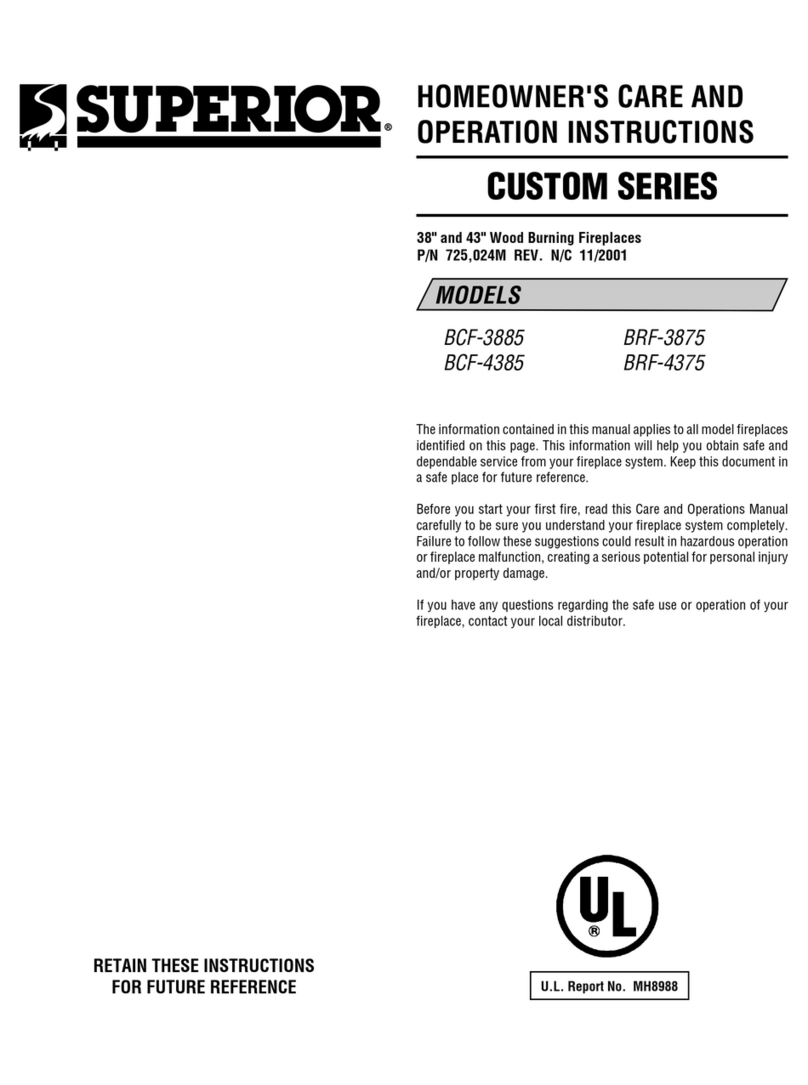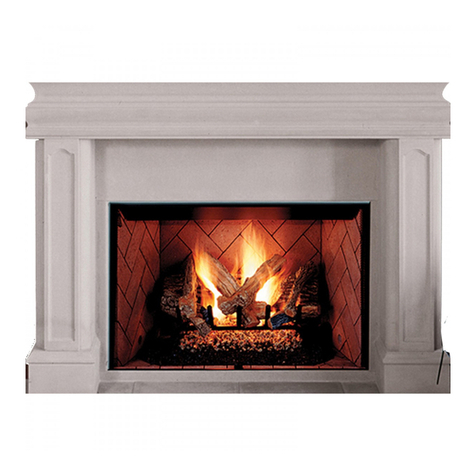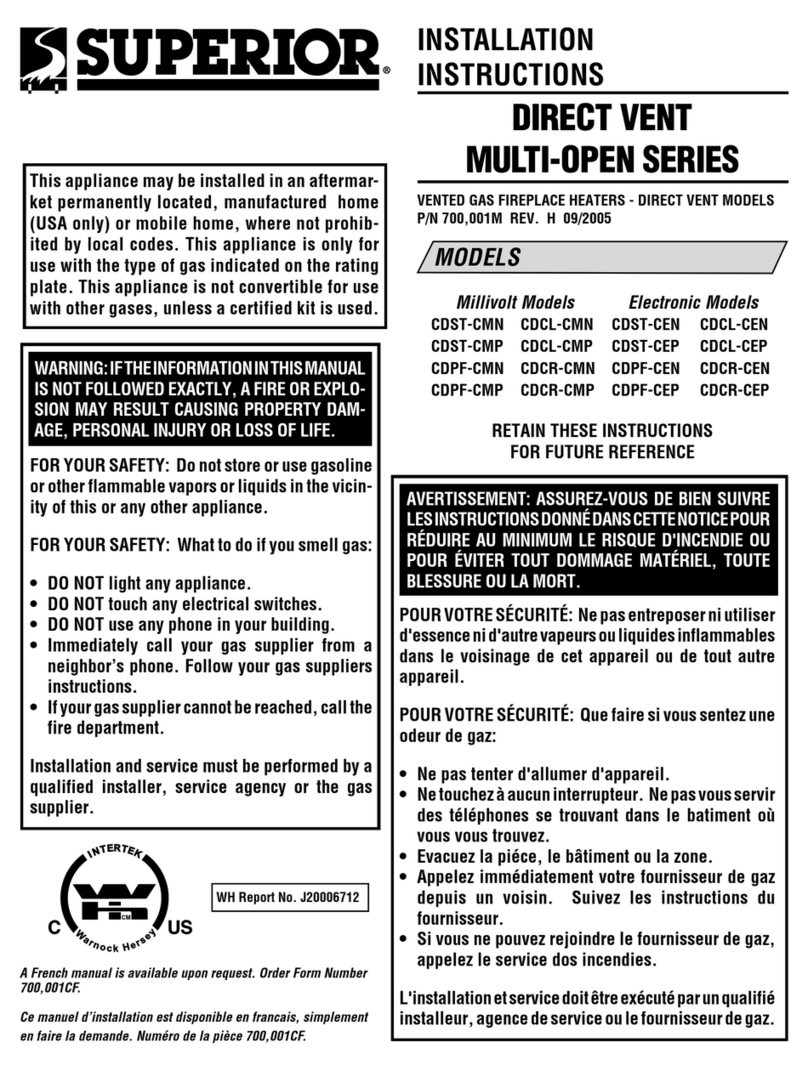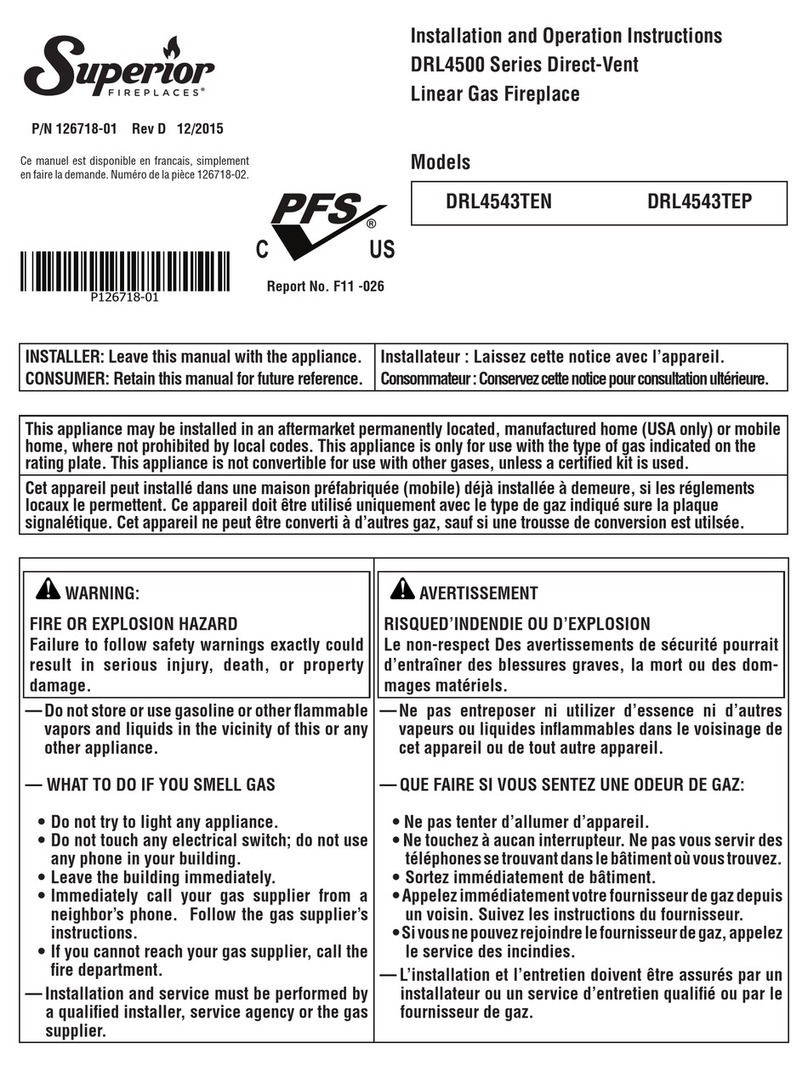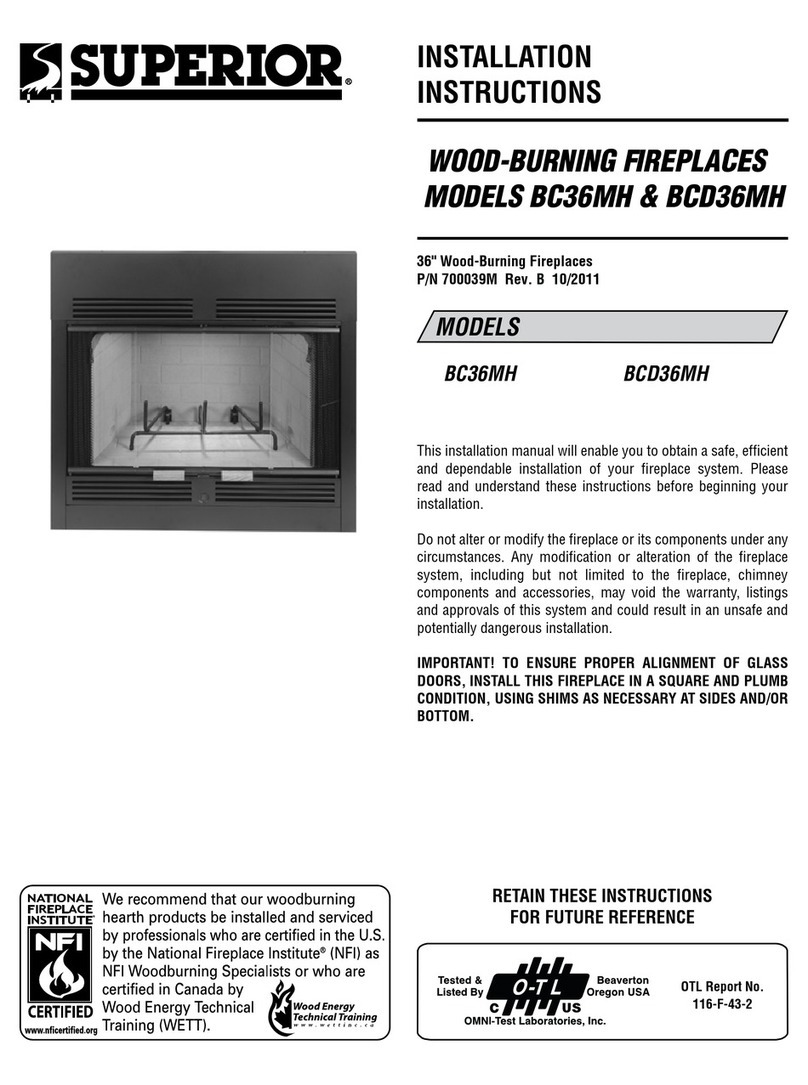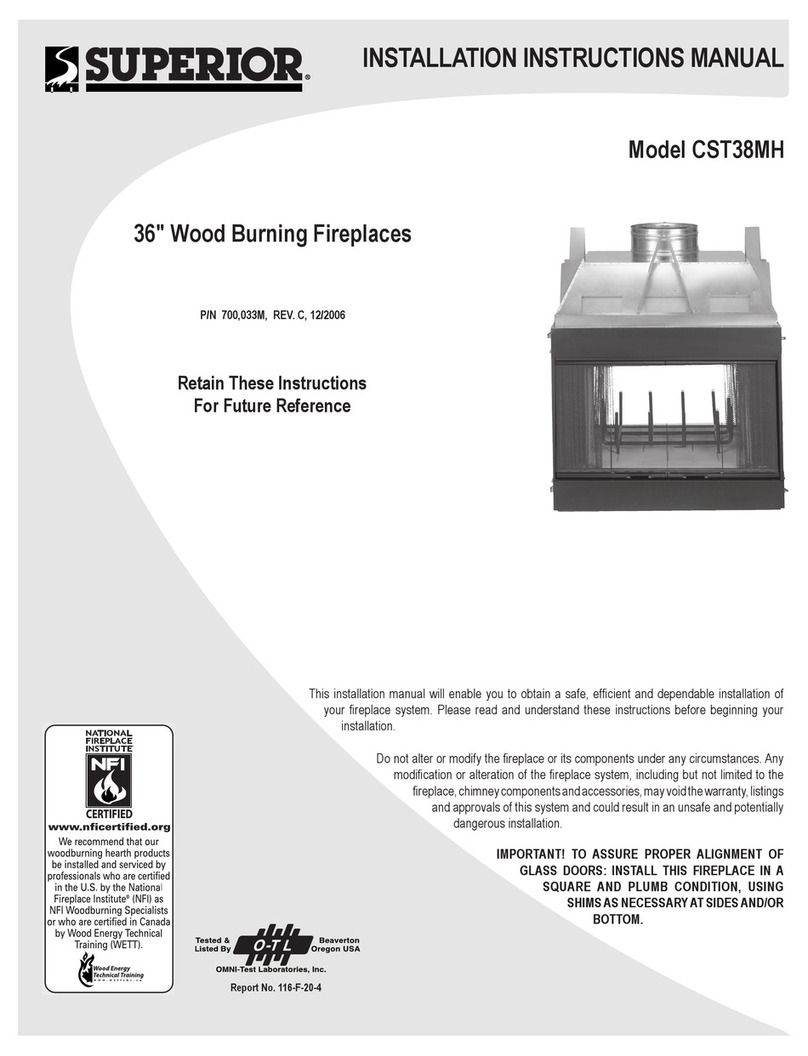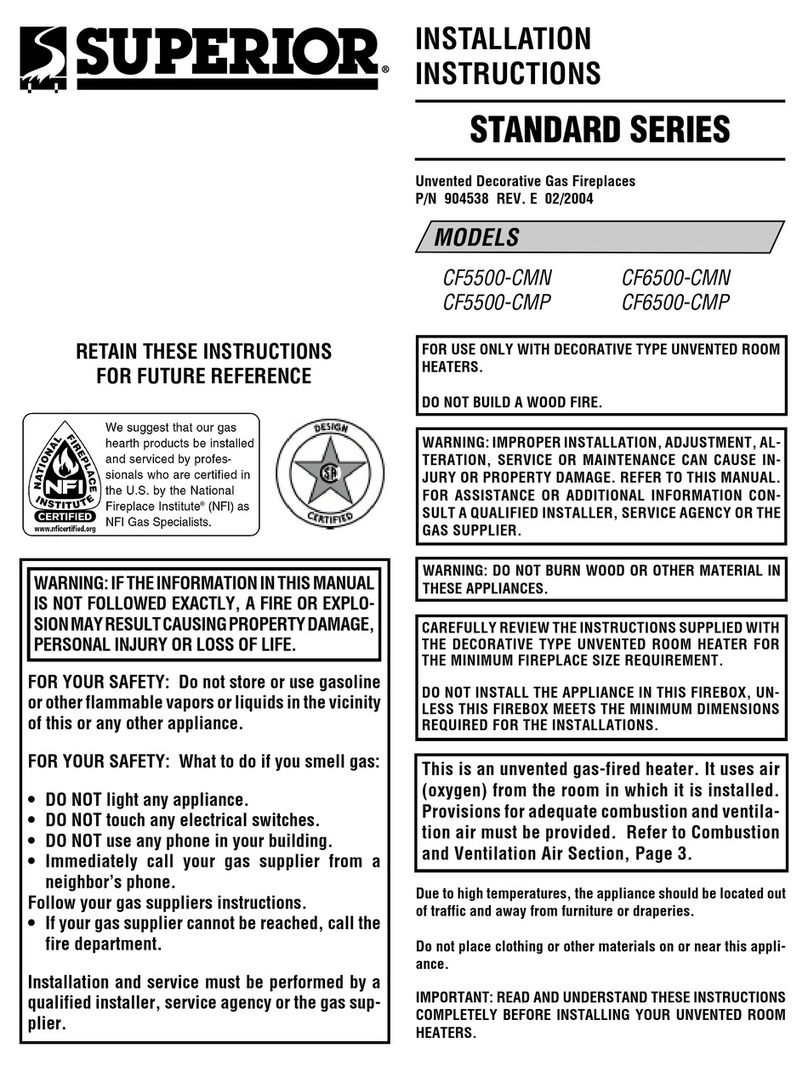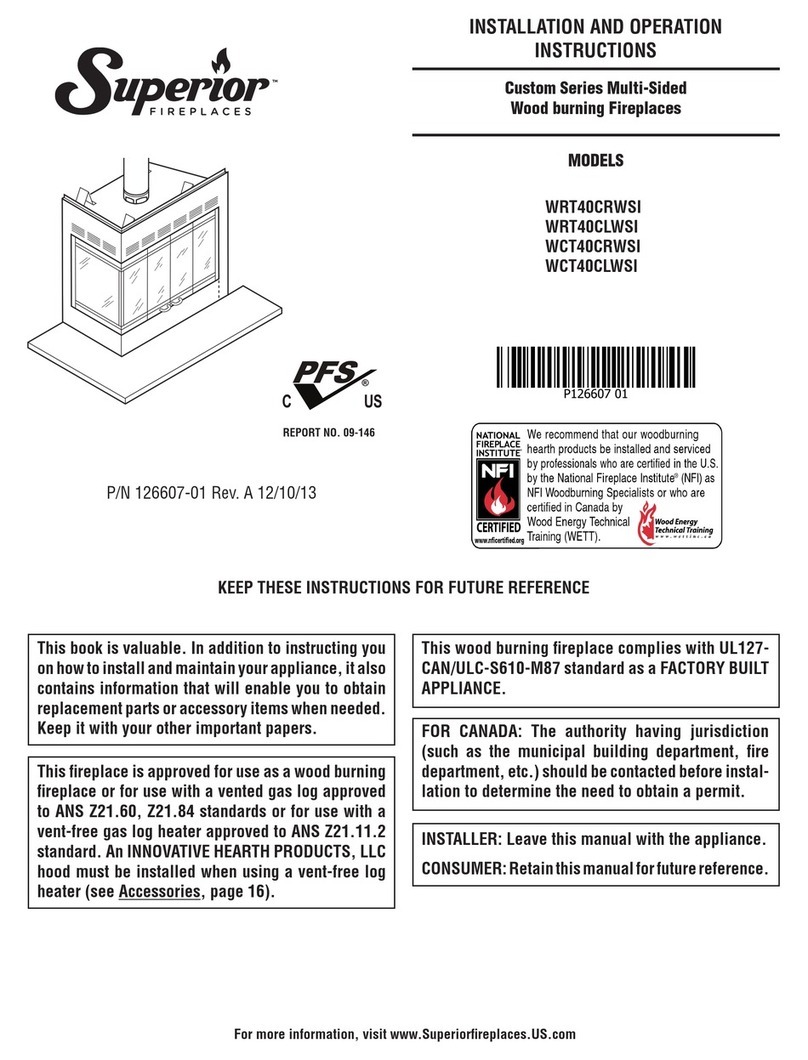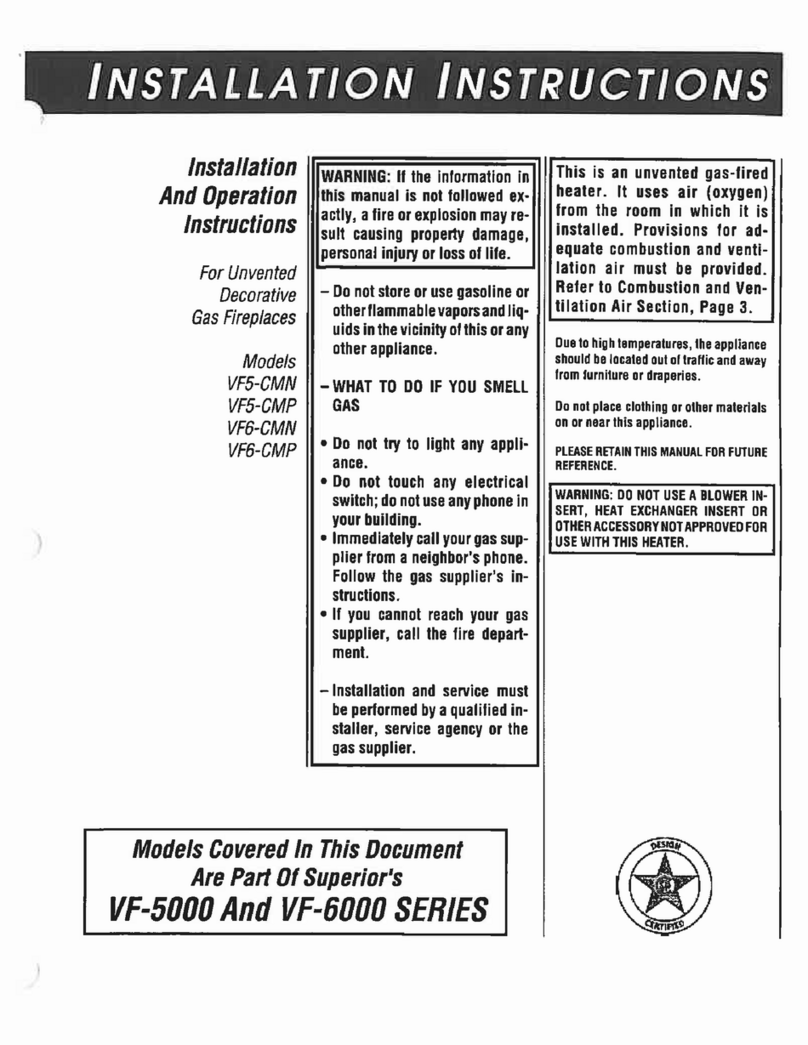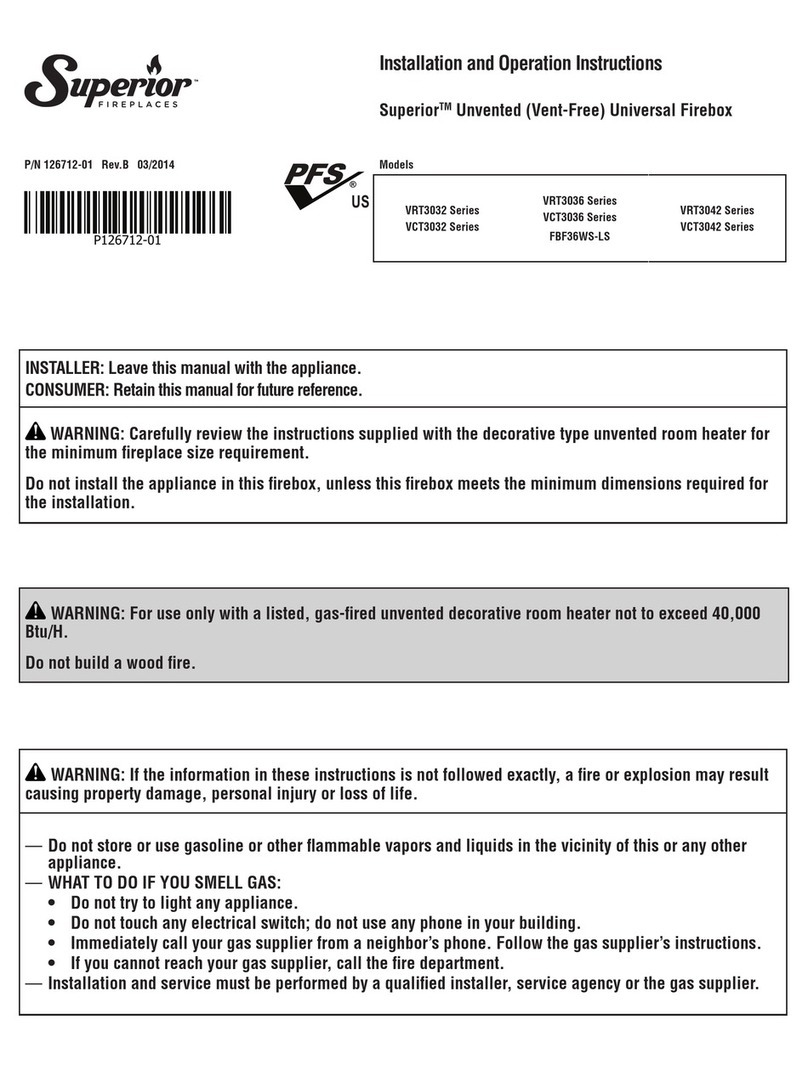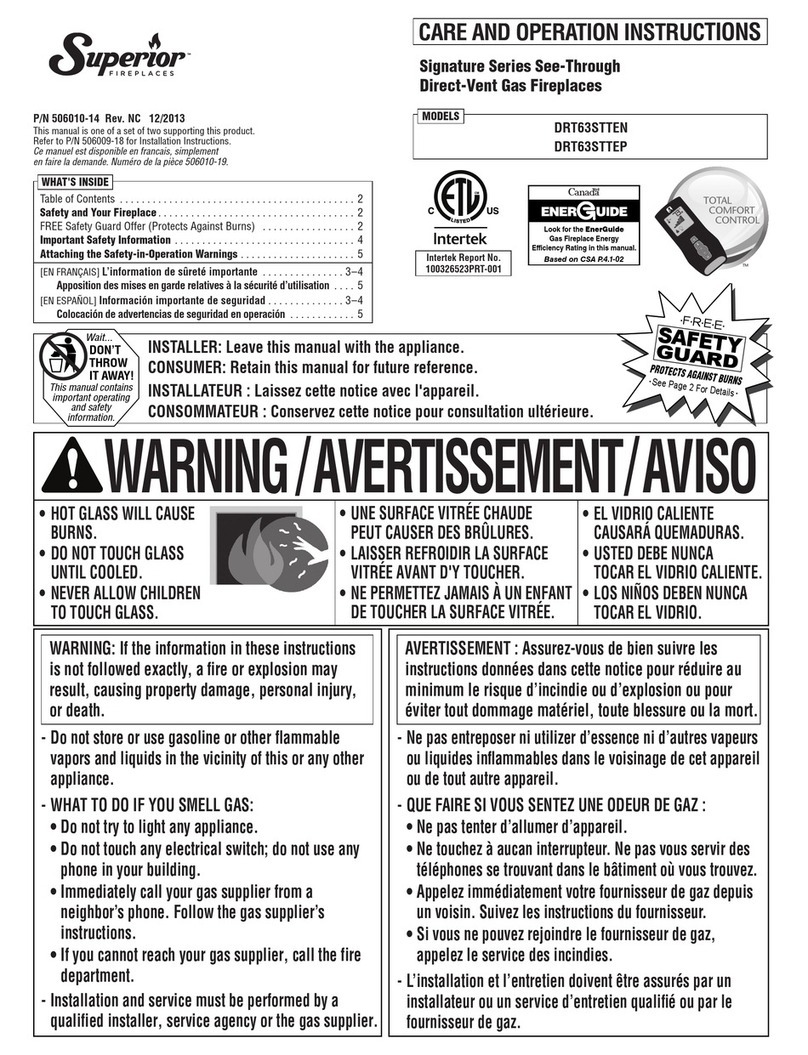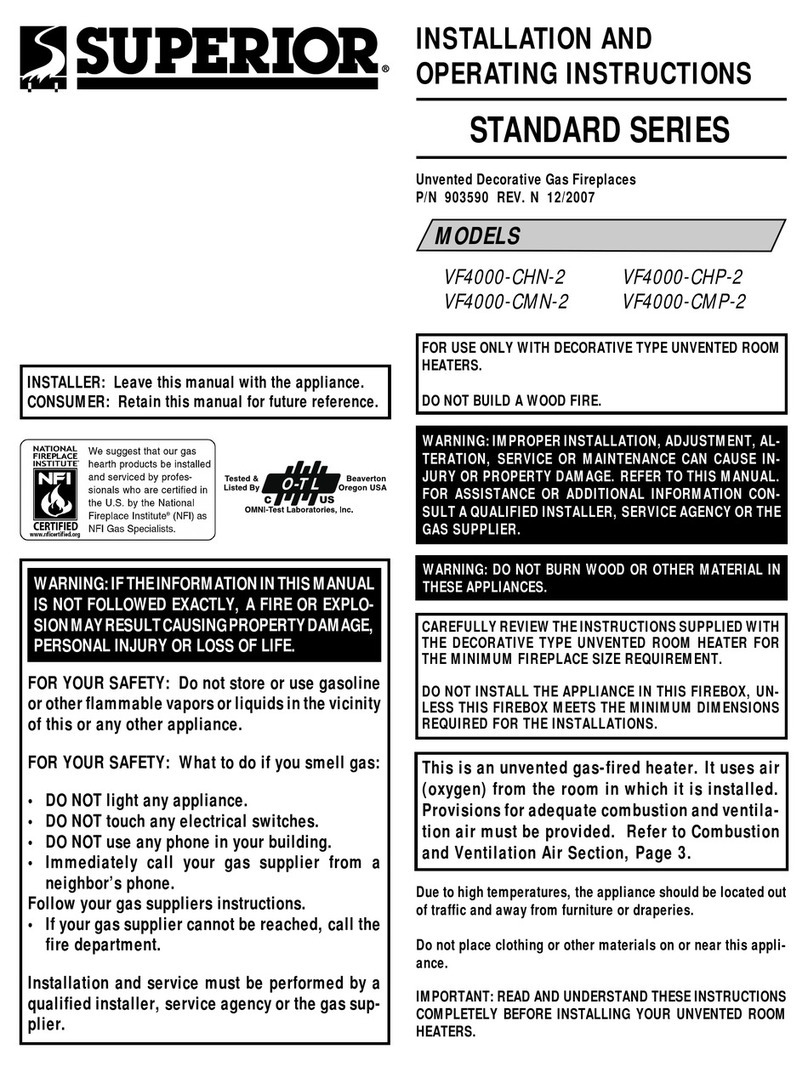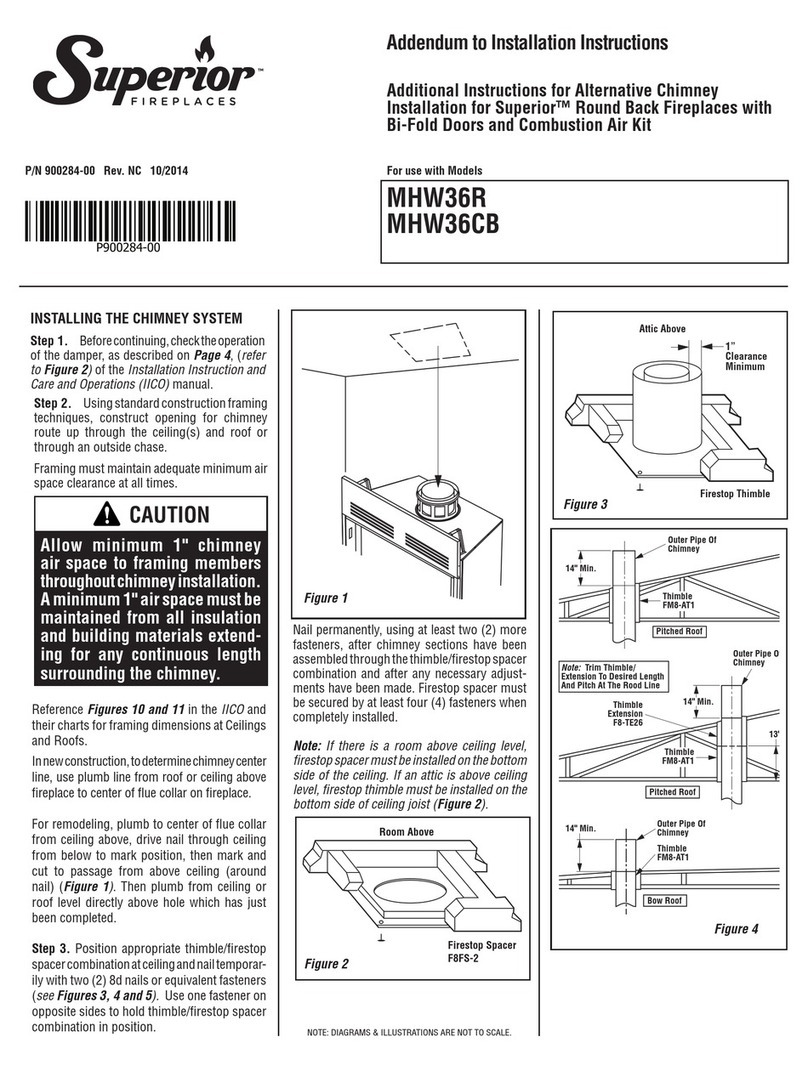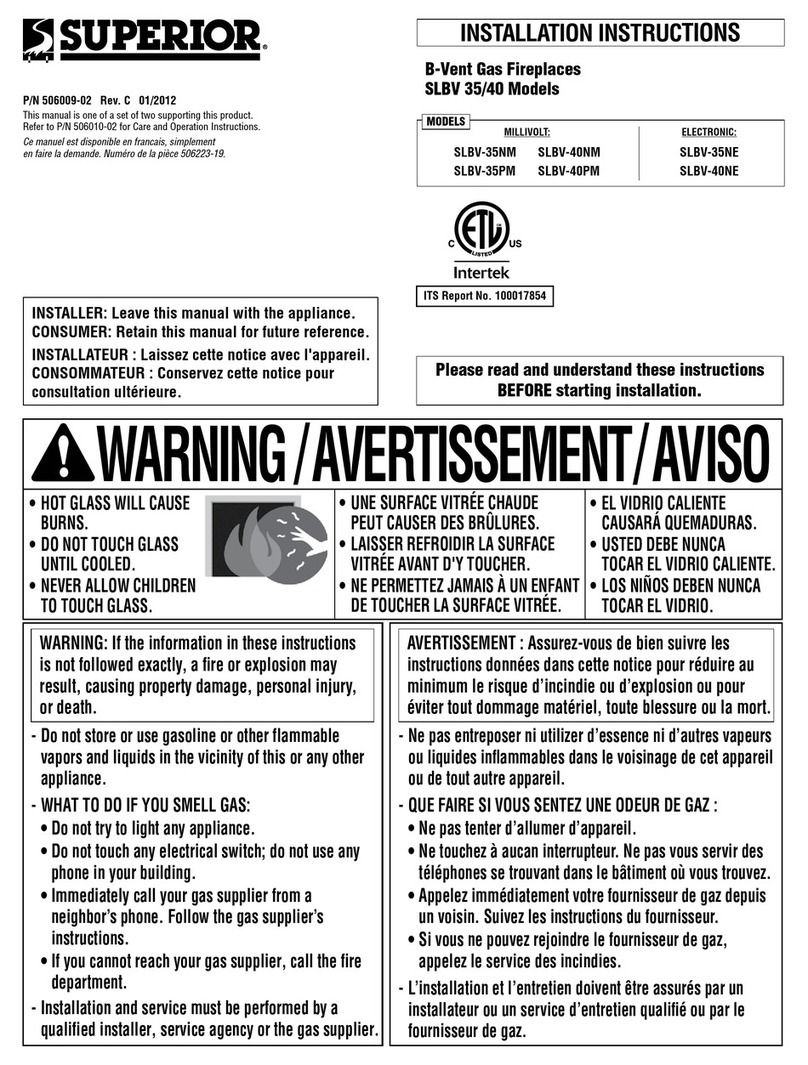
NOTE: DIAGRAMS & ILLUSTRATION NOT TO SCALE. 3
Carbon Monoxide Poisoning: Early signs of
carbonmonoxide poisoning are similar to the
flu with headaches, dizziness and/or nausea.
If you have these signs, obtain fresh air im-
mediately. Turn off the gas supply to the
heater and have the Unvented Gas Heater
serviced as it may not be operating correctly.
•Due to high temperatures, the heater should
belocated out oftraffic andaway fromfurniture
and draperies.
•Children and adults should be alerted to the
hazardofhighsurfacetemperaturesandshould
stay away to avoid burns or clothing ignition.
•Young children should be carefully supervised
when they are in the same room with the heater.
•Do not place clothing or other flammable
material on or near the heater for the purpose
of drying.
•Installation and repair should be done by a
qualified service person. The heater should be
inspected before use and at least annually by a
professionalserviceperson.Morefrequentclean-
ing may be required due to excessive lint from
carpeting, bedding material, etc. It is important
that control compartments, burners and circulat-
ing air passageways of the heater be kept clean.
•Allow the heater to cool before servicing.
Always shut off any electricity or gas to the
heater while performing service work.
•Do not install the VFST and VFPF series
heaters in a bedroom or bathroom.
Unusually tight construction is defined as con-
struction where:
a. wall and ceilings exposed to the outside
atmosphere have a continuous water vapor
retarder with a rating or one perm or less with
openings gasketed or sealed, and
b. weather stripping has been added on oper-
able windows and doors, and
c.caulkingorsealantsareappliedto areas such
as joints around window and door frames,
between sole plates and floors, between wall-
ceiling joints, between wall panels, at penetra-
tions for plumbing, electrical, and gas lines,
and at other openings.
Use the following equations to determine if you
have a confined or unconfined space.
1. Determine the volume of space — ft 3.
Length x Width x Height = _____ ft 3
(Include adjoining rooms with doorless pas-
sageways or ventilation grills between
rooms.)
Example:16'(L)x 16' (W)x8' (H) =2048ft 3
2. Divide the volume of space by 50 ft 3to
determine the maximum BTU/Hr the space
can support.
______ (volume of space – ft 3)/ 50 ft 3=
(Maximum BTU/Hr the space can support)
Example: 3072 ft 3/ 50 ft 3= 40.96
or 40,960 BTU/Hr the space can support.
3. Add the BTU/Hr of all the fuel burning appli-
ances in the space.
Vent-Free heater _______ BTU/Hr
Gas appliance #1* _______ BTU/Hr
Gas appliance #2 + _______ BTU/Hr
Total = _______ BTU/Hr
Example:
VFST Vent-free heater 32,000 BTU/Hr
Gas appliance #1 34,000 BTU/Hr
(water heater) Total = 66,000 BTU/Hr
* Do not include direct-vent gas appliances.
Direct-vent is sealed combustion and draws
combustion air from the outdoors.
WARNING: FAILURE TO COMPLY WITH
THEINSTALLATIONANDOPERATINGIN-
STRUCTIONS PROVIDED IN THIS DOCU-
MENT WILL RESULT IN AN IMPROP-
ERLY INSTALLED AND OPERATING
UNVENTEDROOMHEATER,VOIDINGITS
WARRANTY. ANY CHANGE TO THIS
HEATER AND/OR ITS OPERATING CON-
TROLS IS DANGEROUS. IMPROPER IN-
STALLATION OR USE OF THIS HEATER
CANCAUSE SERIOUS INJURY ORDEATH
FORM FIRE, BURNS, EXPLOSION OR
CARBON MONOXIDE POISONING.
WARNING: THESE APPLIANCES ARE
DESIGNED TO OPERATE ON NATURAL
OR PROPANE GAS ONLY. THE USE OF
OTHER FUELS OR COMBINATION OF
FUELS WILL DEGRADE THE PERFOR-
MANCE OF THIS SYSTEM AND MAY BE
DANGEROUS.
•The installation must conform with local
codes or, in the absence of local codes with the
National Fuel Gas Code, ANSI Z223.1.
•The heater and its individual shut-off valve
must be disconnected from the gas supply
pipingsystemwhile performing anytestsof the
gas supply piping system at pressures in ex-
cess of ¹⁄₂ psig.
•The heater must be isolated from the gas
supply piping system by closing its individual
manualshut-offvalveduringanypressure test-
ing of the gas supply piping system at test
pressures equal to or less than ¹⁄₂ psig.
•Any safety screen or guard removed for
servicing the heater must be replaced prior to
operating the heater.
•Keep heater area clear and free from com-
bustible materials, gasoline and other flam-
mable vapors and liquids.
•Do not use these appliances if any part has
been under water. Immediately call a qualified
professional service technician to inspect the
applianceandtoreplaceanyparts ofthecontrol
system and any gas control which have been
under water.
•Test gage connections are provided on the
front of the gas control valve (identified A for
the manifold side and E for inlet pressure).
•Input ratings are shown in BTU per hour and
are for elevations up to 7,000 feet. Operating
heateraboveelevationsof7,000feetmaycause
ODS pilot outage.
•Ensure that the heater is clean when operat-
ing.Excessivedust accumulation ontheburner
and logs will increase the amount of carbon
monoxide formation and could lead to carbon
monoxide poisoning and death.
CODES
Adhere to all local codes or in their absence the
latest edition of The National Fuel Gas Code
ANSI Z223.1 or NFPA54 which can be obtained
from The American National Standards Insti-
tute, Inc. (1430 Broadway, New York, NY,
10018) or National Fire Protection Association,
Inc. (Batterymarch Park, Quincy, MA, 02269).
COMBUSTION AND VENTILATION AIR
This heater shall not be installed in a confined
space or unusually tight construction unless
provisions are provided for adequate combus-
tion and ventilation air.

